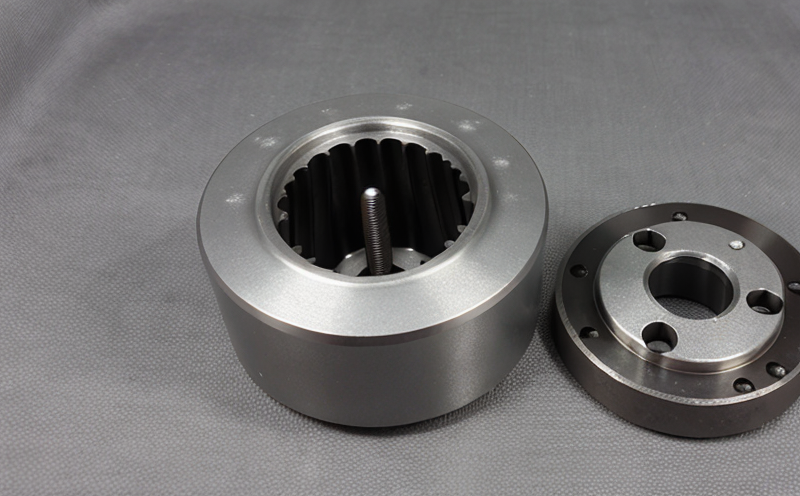ISO 4491-1 Oxygen Content Testing of Metal Powders
The ISO 4491-1 standard provides a comprehensive framework for the determination of oxygen content in metal powders. This method is essential for ensuring the quality and consistency of powder metallurgy processes, additive manufacturing, and related industries where precise control over the chemical composition of raw materials is critical.
Metals used in these sectors often undergo various treatment steps that can affect their oxygen content. By adhering to ISO 4491-1, manufacturers can ensure that their products meet stringent quality standards and comply with international regulations. The testing process involves several stages including sample preparation, drying, weighing, combustion under controlled conditions, and subsequent analysis of the resulting gases.
The precision of this method is crucial for industries reliant on metal powders like aerospace, automotive, electronics manufacturing, and defense sectors. A slight variation in oxygen content can lead to significant changes in material properties such as hardness, strength, ductility, and thermal stability. Therefore, accurate measurement helps prevent defects during production processes while ensuring final products meet safety requirements.
Our laboratory employs state-of-the-art equipment and experienced technicians who follow the guidelines specified by ISO 4491-1 rigorously. Our services cater specifically to clients requiring detailed reports on oxygen content percentages for their metal powders, which are vital inputs into complex manufacturing operations.
- Digital balance with high accuracy
- Thermocouple-controlled combustion chamber
- Inert gas environment during testing
- Automated data recording and analysis software
This combination of advanced technology and methodological adherence ensures reliable results that can be trusted by clients worldwide. Whether you're developing new alloys or optimizing existing ones, our ISO 4491-1 oxygen content testing service offers valuable insights into your powder metallurgy processes.
For those interested in exploring further how this testing contributes to better product performance and safety across different industries, please continue reading about its applications below.
Industry Applications
The ISO 4491-1 oxygen content testing of metal powders finds extensive use in several industrial sectors:
- Aerospace & Defense: Ensures lightweight, durable components necessary for high-performance aircraft and spacecraft.
- Automotive Manufacturing: Supports the creation of lighter vehicles that improve fuel efficiency without compromising safety standards.
- Electronics Manufacturing: Guarantees reliable connections and improved performance in electronic devices by reducing impurities like oxygen that could degrade conductivity or reliability over time.
- Metal Additive Manufacturing: Enables precise control over the chemical composition of metal powders used in 3D printing, leading to stronger parts with enhanced mechanical properties.
In each of these fields, maintaining consistent and low levels of oxygen within metal powder formulations is crucial for achieving optimal performance characteristics. By leveraging our specialized testing services based on ISO 4491-1 standards, businesses can enhance their product quality while minimizing risks associated with variability in raw materials.
Quality and Reliability Assurance
Accurate oxygen content testing is fundamental to ensuring reliable performance across various industries. Here are some key aspects addressed by our service:
- Consistency: Ensures that every batch of metal powder meets specified quality criteria, reducing variability between batches.
- Material Integrity: Helps maintain the structural integrity and mechanical properties of products throughout their lifecycle.
- Regulatory Compliance: Adheres to industry-specific standards like ISO 4491-1, ensuring compliance with international regulations.
- Cost Efficiency: By identifying defective batches early in the manufacturing process, unnecessary waste and rework are minimized, leading to cost savings for clients.
Our approach focuses not only on meeting regulatory requirements but also on providing actionable insights that drive continuous improvement within your organization. This commitment to excellence ensures that every test conducted is accurate, reproducible, and aligned with global best practices.
Environmental and Sustainability Contributions
Incorporating ISO 4491-1 oxygen content testing into your quality assurance protocols can contribute significantly to environmental sustainability:
- Reduction in Waste: By ensuring that only high-quality metal powders are used, the amount of waste generated during production processes is minimized.
- Energy Efficiency: Precise control over oxygen content helps optimize energy consumption during manufacturing processes like sintering or 3D printing.
- Material Utilization Rate: Lower oxygen levels in metal powders enhance the efficiency of materials utilization, reducing overall resource consumption.
Besides these tangible benefits, our service also supports broader sustainability goals by promoting responsible sourcing and usage practices. We encourage clients to consider how their procurement decisions impact environmental impacts beyond just cost considerations.





